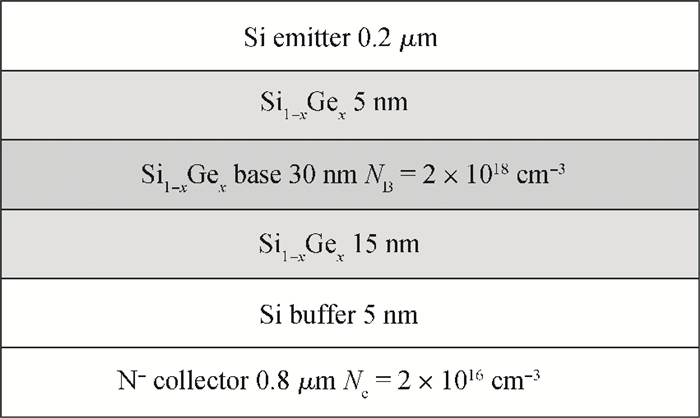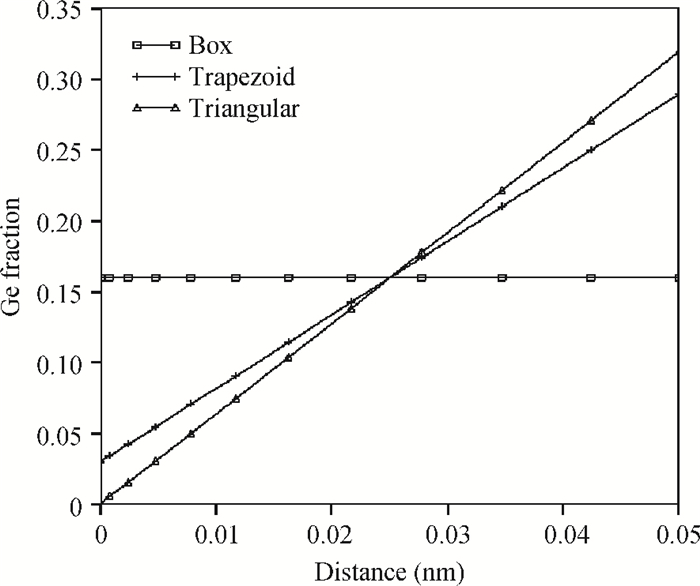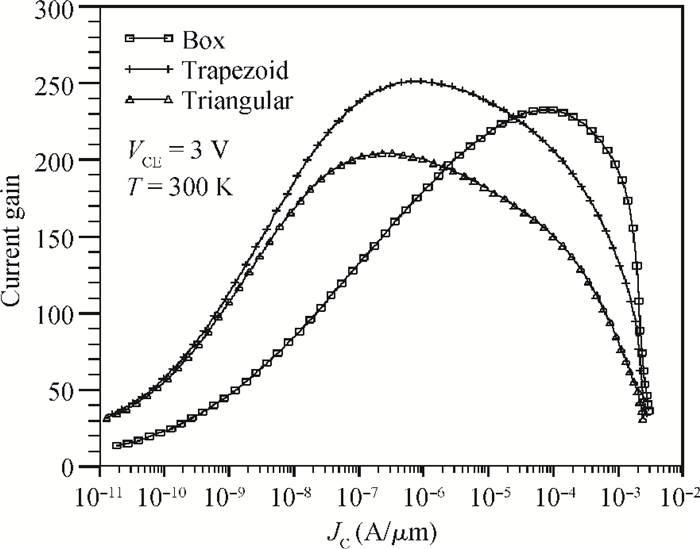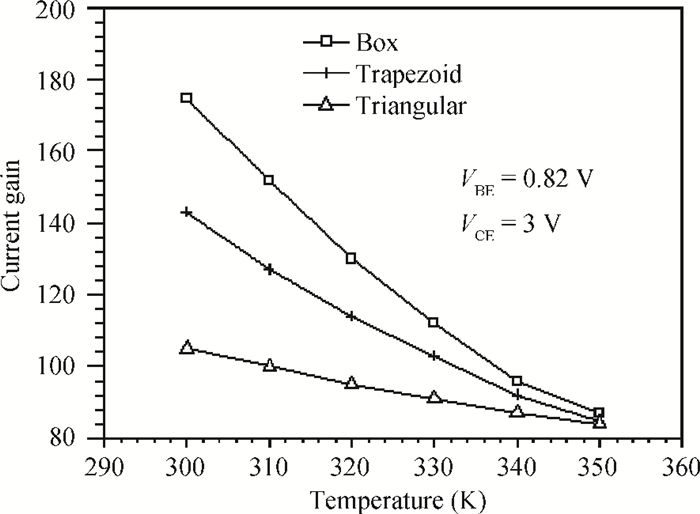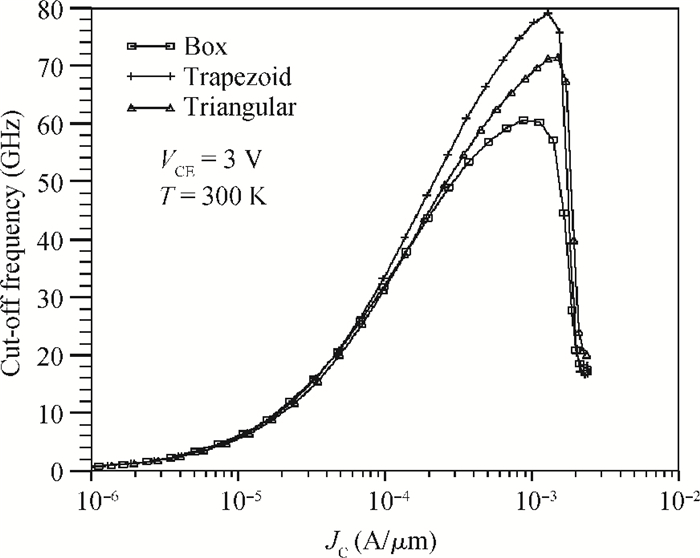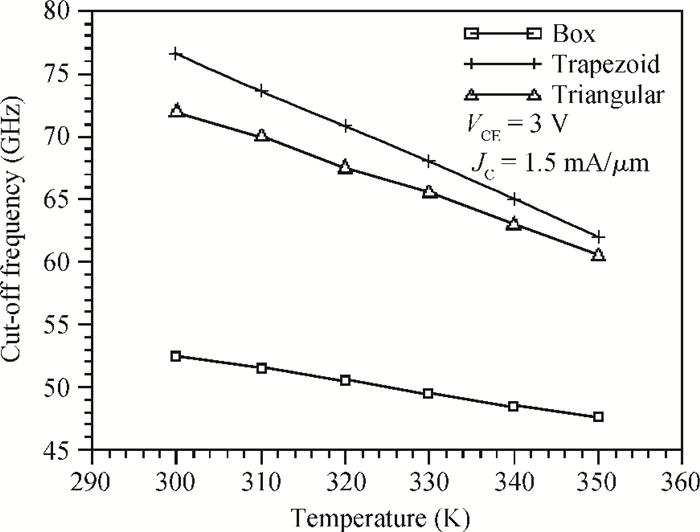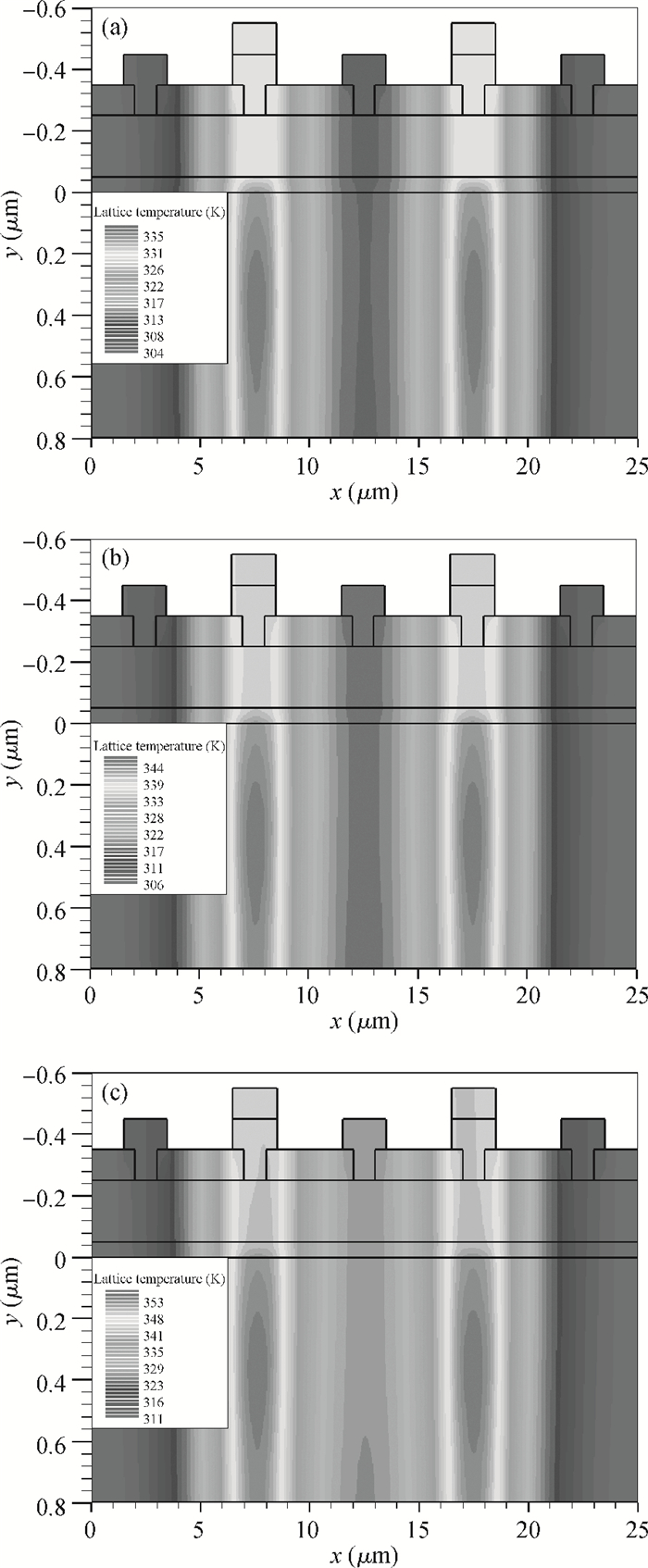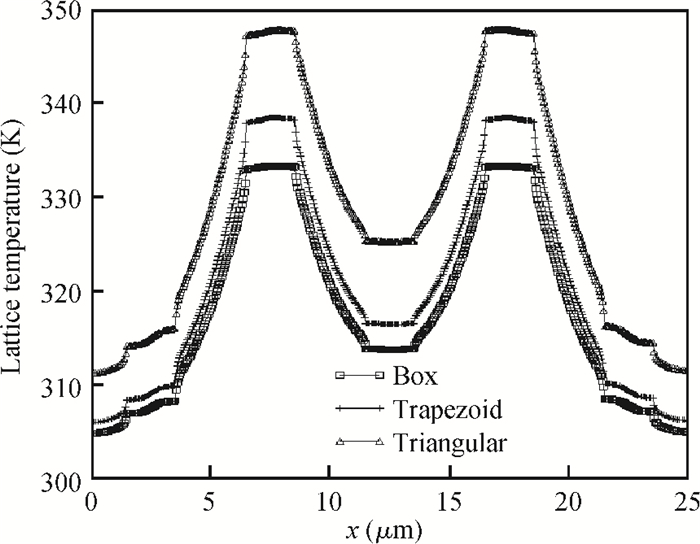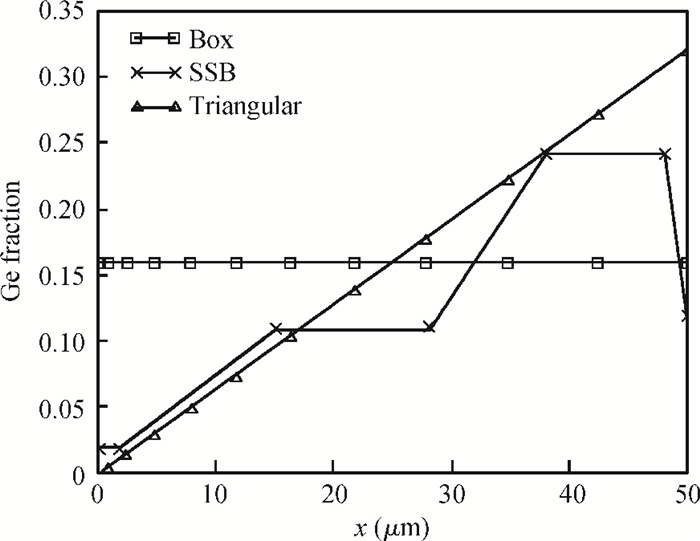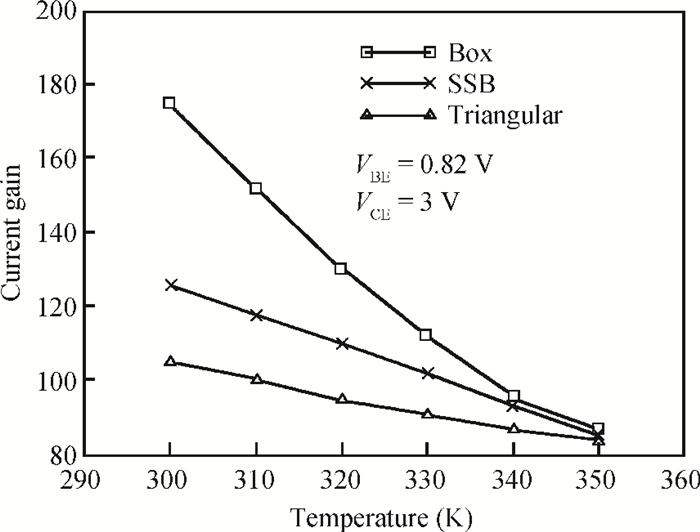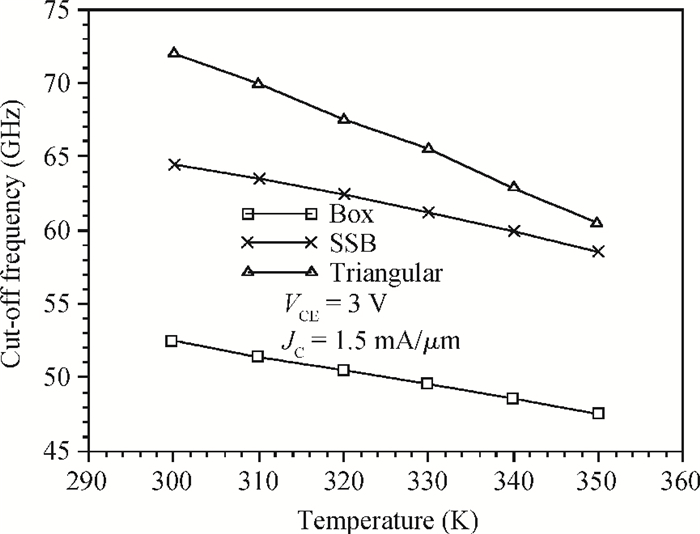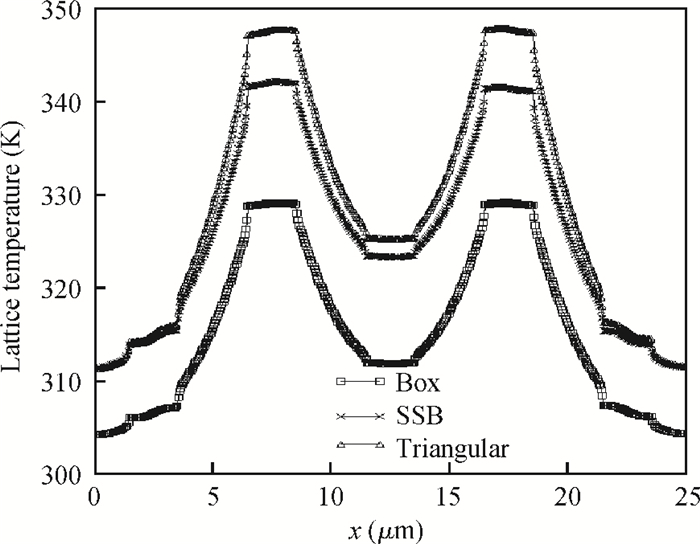| Citation: |
Qiang Fu, Wanrong Zhang, Dongyue Jin, Chunbao Ding, Yanxiao Zhao, Yujie Zhang. Design and optimization of Ge profiles for improved thermal stability of SiGe HBTs[J]. Journal of Semiconductors, 2013, 34(6): 064001. doi: 10.1088/1674-4926/34/6/064001
****
Q Fu, W R Zhang, D Y Jin, C B Ding, Y X Zhao, Y J Zhang. Design and optimization of Ge profiles for improved thermal stability of SiGe HBTs[J]. J. Semicond., 2013, 34(6): 064001. doi: 10.1088/1674-4926/34/6/064001.
|
Design and optimization of Ge profiles for improved thermal stability of SiGe HBTs
DOI: 10.1088/1674-4926/34/6/064001
More Information
-
Abstract
The impact of the three state-of-the-art germanium (Ge) profiles (box, trapezoid and triangular) across the base of SiGe heterojunction bipolar transistors (HBTs) under the condition of the same total amount of Ge on the temperature dependence of current gain β and cut-off frequency fT, as well as the temperature profile, are investigated. It can be found that although the β of HBT with a box Ge profile is larger than that of the others, it decreases the fastest as the temperature increases, while the β of HBT with a triangular Ge profile is smaller than that of the others, but decreases the slowest as the temperature increases. On the other hand, the fT of HBT with a trapezoid Ge profile is larger than that of the others, but decreases the fastest as the temperature increases, and the fT of HBT with a box Ge profile is smaller than that of the others, but decreases the slowest as temperature increases. Furthermore, the peak and surface temperature difference between the emitter fingers of the HBT with a triangular Ge profile is higher than that of the others. Based on these results, a novel segmented step box Ge profile is proposed, which has modest β and fT, and trades off the temperature sensitivity of current gain and cut-off frequency, and the temperature profile of the device. -
References
[1] Fu J, Bach K. A simple electrical approach to extracting the difference in bandgap across neutral base for SiGe HBT's. Materials Science in Semiconductor Processing, 2005, 8:301 doi: 10.1016/j.mssp.2004.09.069[2] Cressler J D. SiGe HBT technology:a new contender for Si based RF and microwave circuit applications. IEEE Trans Microw Theory Tech, 1998, 46(5):572 doi: 10.1109/22.668665[3] Miura M, Shimamoto H, Oda K, et al. Ultra-low-power SiGe HBT technology for wide-range microwave applications. IEEE Bipolar/BiCMOS Circuits and Technology Meeting (BCTM), Monterey, USA, 2008:129 https://www.infona.pl/resource/bwmeta1.element.ieee-art-000004662729[4] Zhang W, Yang J, Liu H, et al. The temperature dependence of DC characteristics and its implication in microwave power Si/SiGe/Si HBT's. International Conference on Microwave and Milliwave Technology (ICMMR/T), Beijing, China, 2004:594[5] Rinaldi N. Small-signal operation of semiconductor devices including self-heating with application to thermal characterization and instability analysis. IEEE Trans Electron Devices, 2001, 48(2):323 doi: 10.1109/16.902734[6] Jin Dongyue, Zhang Wanrong, Shen Pei, et al. Multi-finger power SiGe HBT with non-uniform finger spacing. Chinese Journal of Semiconductors, 2007, 28(10):1527 https://www.infona.pl/resource/bwmeta1.element.ieee-art-000004266205[7] Lee J G, Oh T K, Kim B, et al. Emitter structure of power heterojunction bipolar transistor for enhancement of thermal stability. Solid State Electron, 2001, 45(1):27 doi: 10.1016/S0038-1101(00)00189-1[8] Huang S C, Chang C T, Pan C T, et al. Improved SiGe power HBT characteristics by emitter layout. Solid State Electron, 2008, 52(6):946 doi: 10.1016/j.sse.2007.12.009[9] Jankovic N D, Neill A O. 2D device-level simulation study of strained-Si pnp heterojunction bipolar transistor on virtual substrates. Solid State Electron, 2004, 45(1):225[10] Liu Liang, Wang Yuqi, Xiao Bo, et al. Numerical analysis of a novel microwave power SiGe HBT. Chinese Journal of Semiconductors, 2005, 26(1):96 http://en.cnki.com.cn/Article_en/CJFDTOTAL-BDTX200501019.htm[11] Kashyap A, Chauhan R K. Effect of Ge profile design on the performance o an n-p-n SiGe HBT-based analog circuit. Microelectron J, 2008, 39:1770 doi: 10.1016/j.mejo.2008.04.018[12] Raymond J E H, Slotboom J W, Pruijmboom A, et al. On the optimization of SiGe-base bipolar transistors. IEEE Trans Electron Devices, 1996, 43(9):1518 doi: 10.1109/16.535344[13] William E A, Cressler J D, Richey D M. Base-profile optimization for minimum noise figure in advanced UHV/CVD SiGe HBT's. IEEE Trans Electron Devices, 1998, 46(5):653 http://ieeexplore.ieee.org/document/668678/?reload=true&arnumber=668678&contentType=Journals%20%26%20Magazines[14] Hu Huiyong, Zhang Heming, Dai Xianying, et al. An emitter delay time of an SiGe HBT. Chinese Journal of Semiconductors, 2005, 26(7):1384 -
Proportional views





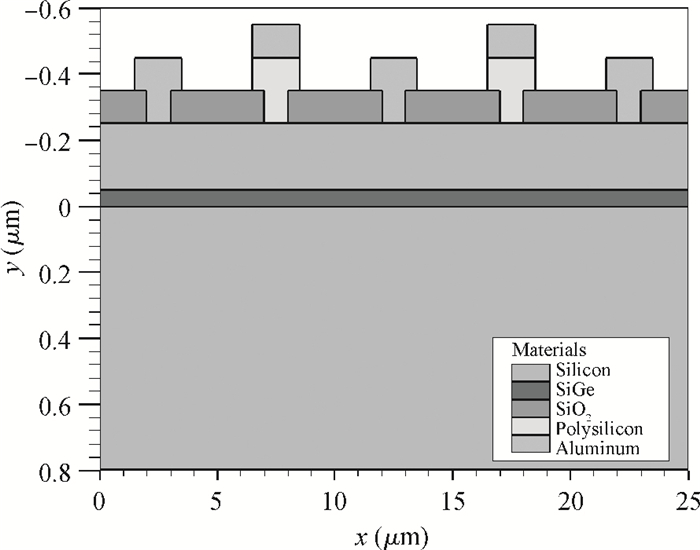
 DownLoad:
DownLoad:
